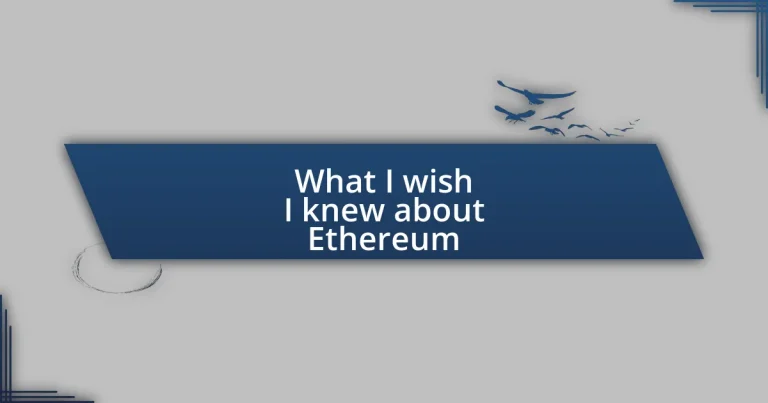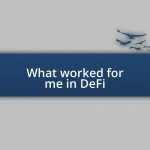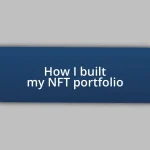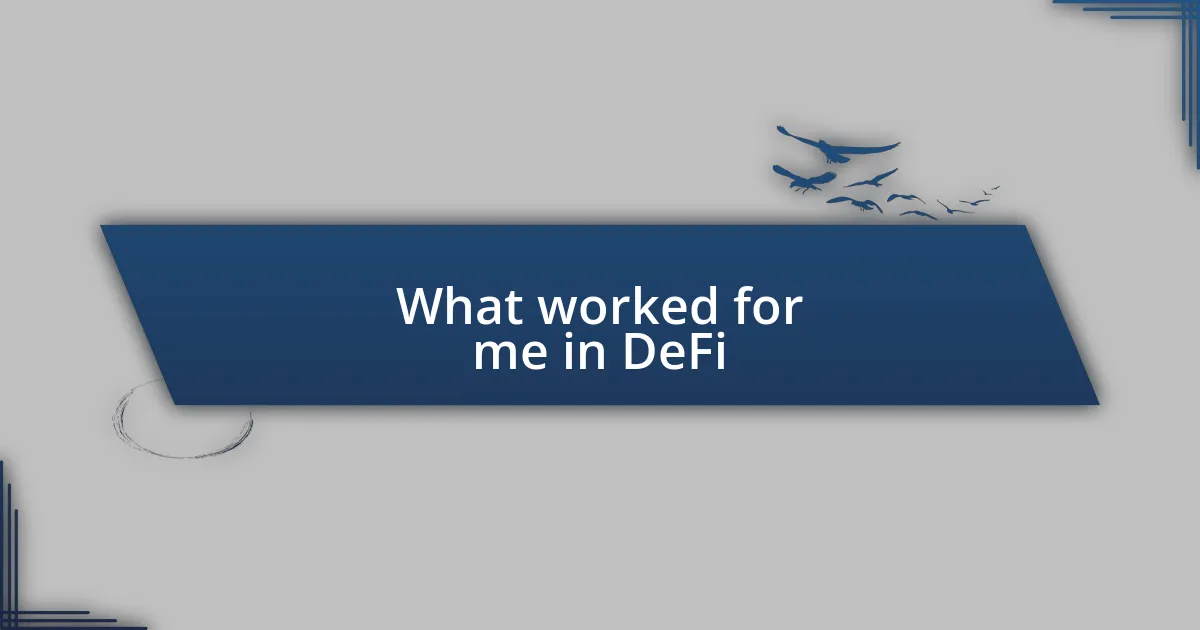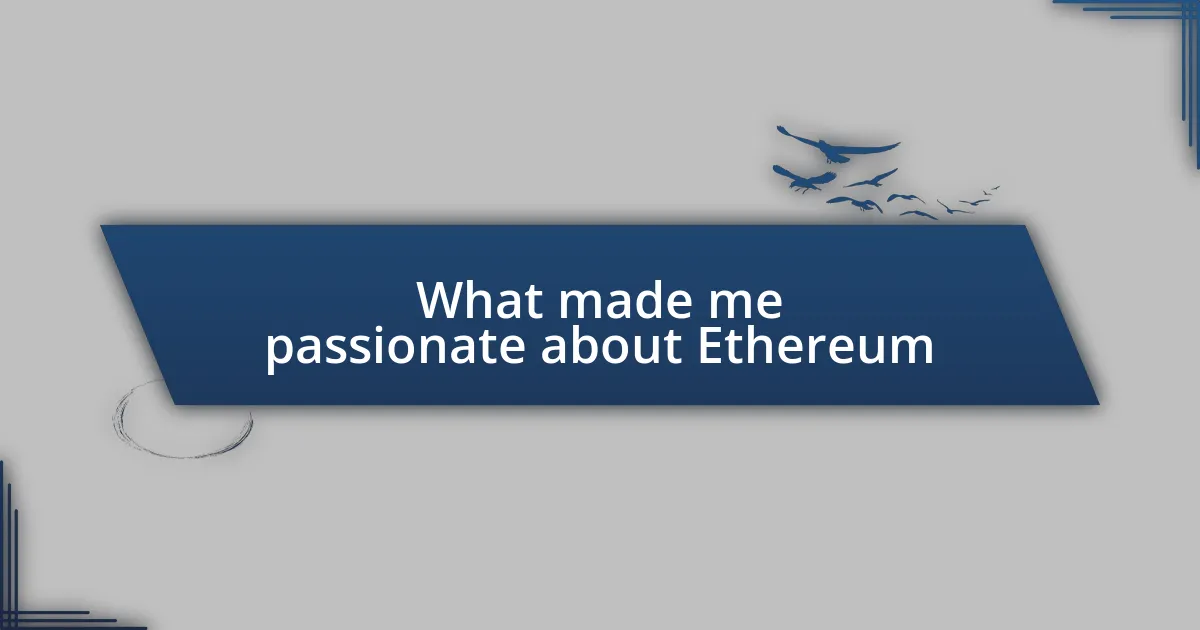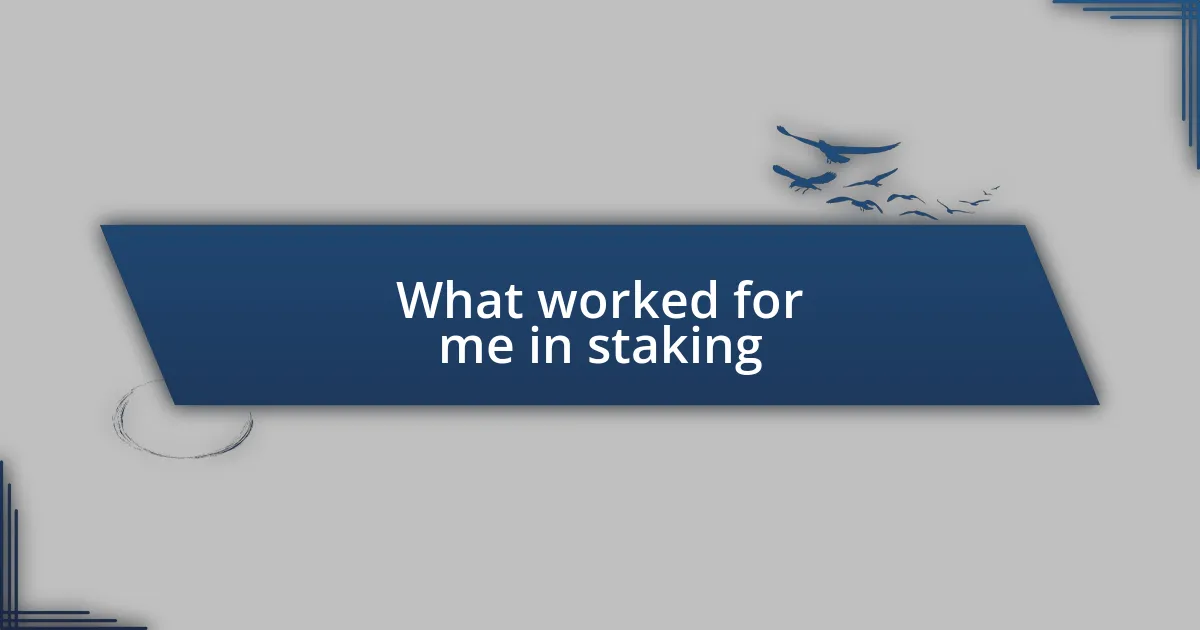Key takeaways:
- Ethereum enables smart contracts and decentralized applications (dApps), transforming various industries and eliminating intermediaries.
- The transition to Ethereum 2.0 moves from proof-of-work to proof-of-stake, enhancing transaction speed while reducing energy consumption.
- Investors should prioritize research, security practices, and portfolio diversification to navigate the volatility of the crypto market effectively.
- Future developments, such as Layer 2 solutions and integration with emerging technologies like AI, promise to expand Ethereum’s capabilities and adoption.
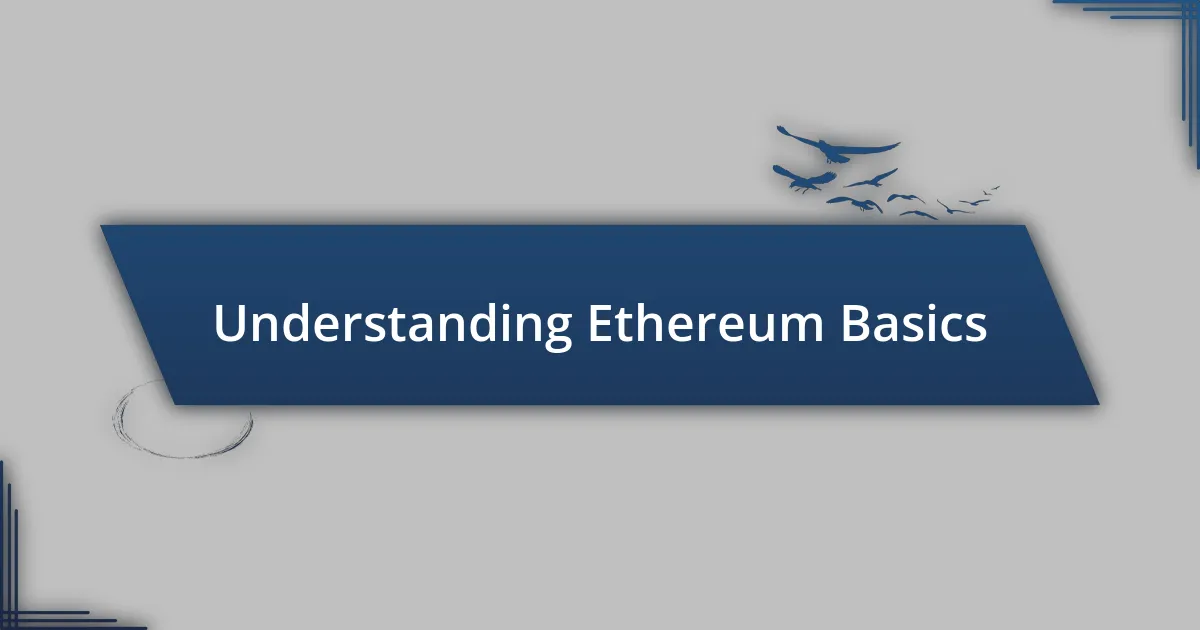
Understanding Ethereum Basics
When I first heard about Ethereum, it felt like stepping into a new world. Unlike Bitcoin, which is primarily a digital currency, Ethereum supports smart contracts—self-executing contracts with the terms directly written into code. Isn’t it fascinating to think about how this technology can eliminate the need for intermediaries?
Thinking back to my initial exploration, I remember being puzzled by the concept of gas. Gas is essentially the fee required to conduct transactions on the Ethereum network. It’s a bit like paying for postage; without it, your sensitive transactions are left in limbo. Learning this made me appreciate how the network incentivizes miners to validate transactions while also keeping the system secure.
As I dug deeper, I realized that Ethereum’s capability extends beyond simple transactions. It enables the creation of decentralized applications (dApps) that operate on its blockchain. What really struck me was the potential for innovation within various industries! It opened my eyes to the possibilities of building unalterable voting systems or enabling decentralized finance (DeFi). Have you ever imagined what your life would look like if you controlled your financial destiny entirely? The thought is exhilarating!
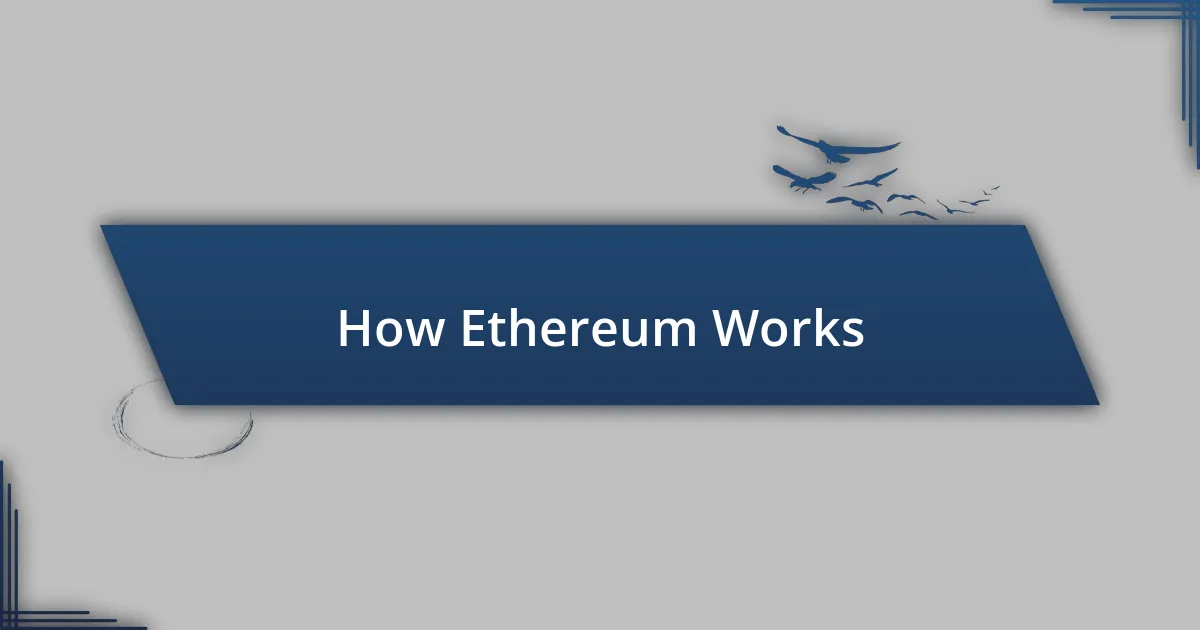
How Ethereum Works
Ethereum operates on a decentralized network of computers, often referred to as nodes. Each node maintains a copy of the entire blockchain, ensuring transparency and security. I remember feeling a sense of empowerment when I realized that no single entity controls Ethereum; instead, it’s a collective effort. This distributed nature makes it resilient against failures and manipulation, reinforcing my belief in the technology’s potential.
In more technical terms, Ethereum utilizes a system called the Ethereum Virtual Machine (EVM) to execute smart contracts. The EVM acts as the runtime environment for computations, allowing developers to create dApps that run without downtime or interference. Here are some essential components of how Ethereum operates:
- Blockchain: A digital ledger that records transactions in chronological order.
- Smart Contracts: Self-executing contracts programmed to automatically enforce agreements.
- Tokens: Digital assets that can represent anything from currency to property and can be easily transferred.
- Gas: A fee necessary to execute transactions, ensuring that the network remains efficient.
Understanding these components illuminated my curiosity about blockchain technology. The more I learned, the more I realized how Ethereum is not just a cryptocurrency; it is a revolutionary platform that opens doors to endless possibilities.
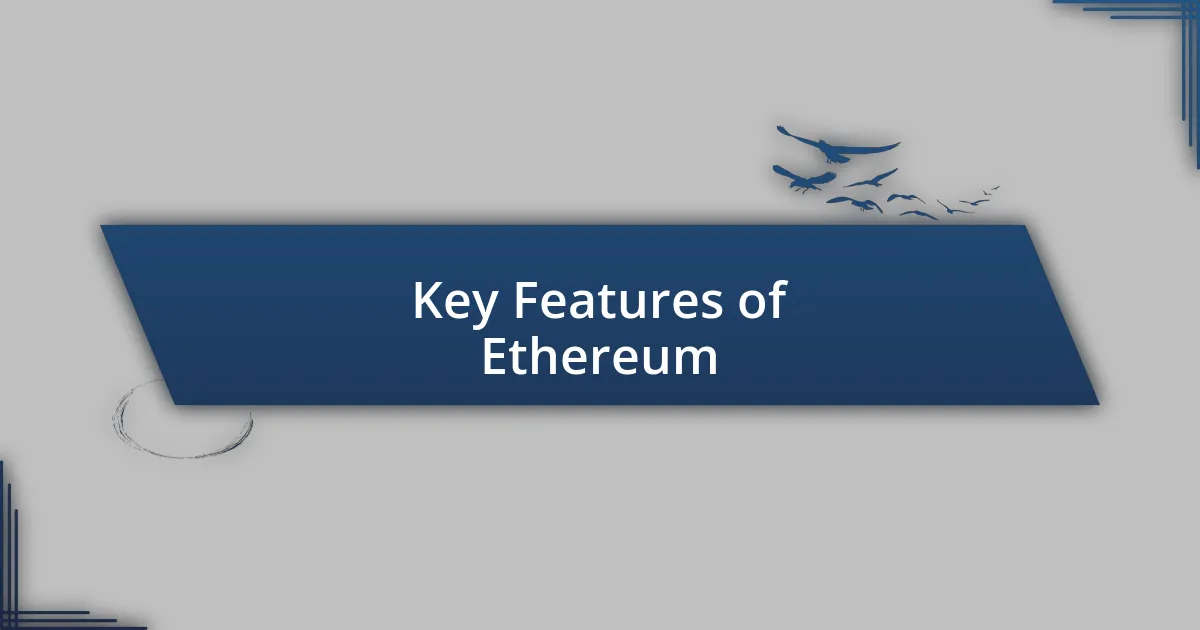
Key Features of Ethereum
Ethereum boasts several key features that set it apart in the blockchain landscape. For one, its smart contracts are transformative. I still recall the first time I understood their potential—contracts that self-execute without intermediaries simply blew my mind. This capability can streamline countless industries, from finance to real estate, and it makes me optimistic about the efficiency improvements we can see in the future.
Another significant feature is Ethereum’s ability to facilitate decentralized applications (dApps). I remember being fascinated by how these applications could function without a central authority. Imagine a social network or a marketplace where users retain control over their data; it’s a game changer. This decentralized nature encourages innovation while reducing the risk of censorship or control by a single entity, a sentiment that resonates deeply with my values of freedom and autonomy.
Finally, the transition to Ethereum 2.0, with its shift from proof-of-work to proof-of-stake, marks a vital evolution. When I learned about this change, I felt encouraged towards a more sustainable future for blockchain. It’s exciting to think about how this upgrade not only enhances transaction speed but also lowers energy consumption, addressing one of the more significant critiques of blockchain technology. This shift shows Ethereum’s commitment to improving while being conscious of its impact on the environment.
| Feature | Description |
|---|---|
| Smart Contracts | Self-executing contracts that automate agreements without intermediaries. |
| dApps | Decentralized applications that run on the Ethereum network, ensuring user control over data. |
| Ethereum 2.0 | Transition to proof-of-stake to enhance transaction speed and reduce energy consumption. |
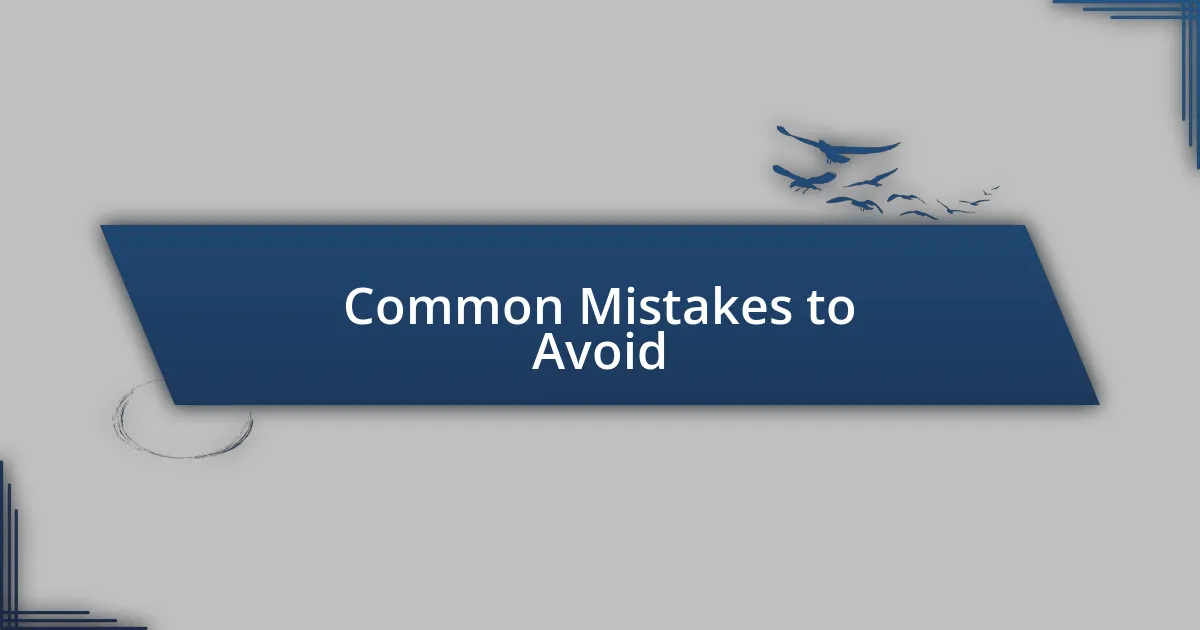
Common Mistakes to Avoid
Rushing into investments without doing proper research is a common pitfall. In my early days of exploring Ethereum, I found myself tempted by hype and excitement, often resulting in purchases that didn’t align with my long-term goals. It’s vital to take the time to understand the technology, the project’s fundamentals, and the team behind it before diving in.
Another mistake to avoid is neglecting security practices. I learned this the hard way when my participation in an early project led to my wallet being compromised. Always use hardware wallets for holding significant amounts of cryptocurrency and consider two-factor authentication to add that extra layer of protection. Have you taken these steps? They can be the difference between keeping your investments safe and facing regret.
Lastly, many newcomers underestimate the volatility inherent in the crypto market. I remember checking my portfolio daily, often feeling a rollercoaster of emotions as prices swung dramatically. It’s essential to maintain a rational perspective and avoid making impulsive decisions based on market fluctuations—sticking to a well-thought-out strategy can help manage the emotional ups and downs. Wouldn’t it be better to focus on your long-term vision rather than get caught up in daily price changes?

Best Practices for Investment
When investing in Ethereum, it’s crucial to establish a clear strategy. In my experience, setting specific goals helped me stay focused on what I wanted to achieve rather than wandering aimlessly in the market. Have you considered what you want to accomplish with your investments? Whether it’s short-term gains or long-term wealth building, defining your vision is the first step toward success.
Diversification is another key practice that I learned to appreciate over time. Early on, I was tempted to put all my funds into one promising project, thinking I had found the golden ticket. However, spreading investments across various assets not only mitigated risk but also opened up opportunities for potential gains in different sectors. Isn’t it wiser to protect your investment by not putting all your eggs in one basket?
Lastly, I cannot stress enough the importance of regularly reviewing and adjusting your portfolio. I’ve found that life—much like the crypto market—can be unpredictable. Rigorously monitoring my investments allowed me to react to changes effectively instead of being caught off guard. Have you taken a moment to review your strategies lately? Constant evaluation helps you adapt to new developments and align your investments with your evolving goals.
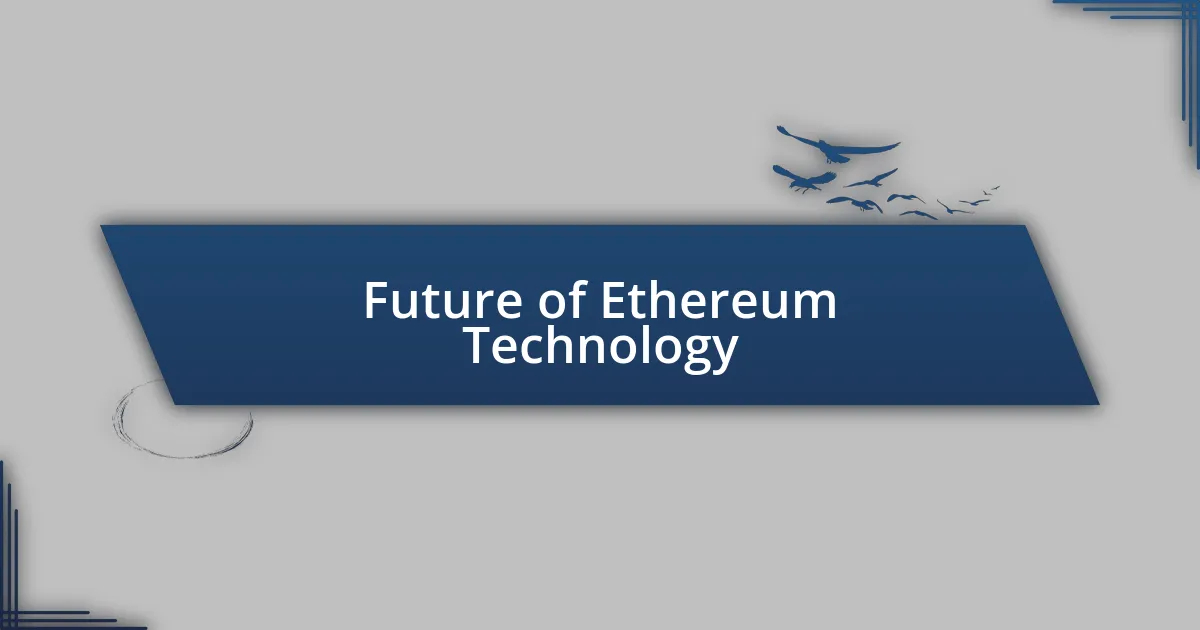
Future of Ethereum Technology
The future of Ethereum technology looks incredibly promising as it continues evolving to address scalability and efficiency challenges. I remember diving into Ethereum during its early days, getting excited about the potential of smart contracts. The transition to Ethereum 2.0, with its shift to a proof-of-stake model, reminds me of the first time I upgraded my old computer—I instantly noticed the improvements in speed and performance. It’s astonishing to think about how this upgrade will make transactions faster and more environmentally friendly.
Moreover, the ongoing development of Layer 2 solutions has me optimistic about Ethereum’s ability to handle a greater volume of transactions without the slowdowns that once plagued the network. It’s like finding a faster route to work; who wouldn’t want that daily convenience? As I’ve navigated the world of decentralized finance, I can’t help but marvel at how these innovations will pave the way for a broader adoption of Ethereum across various industries. Will you be ready to embrace these advancements?
As we look ahead, I believe the integration of Ethereum with emerging technologies like artificial intelligence and the Internet of Things could redefine how we interact with digital assets. I’ve seen how automation can enhance trading strategies, which makes me wonder: what could happen when smart contracts take full advantage of AI? The potential is vast, and it excites me to think about how Ethereum could be at the forefront of creating a more interconnected and efficient digital landscape.
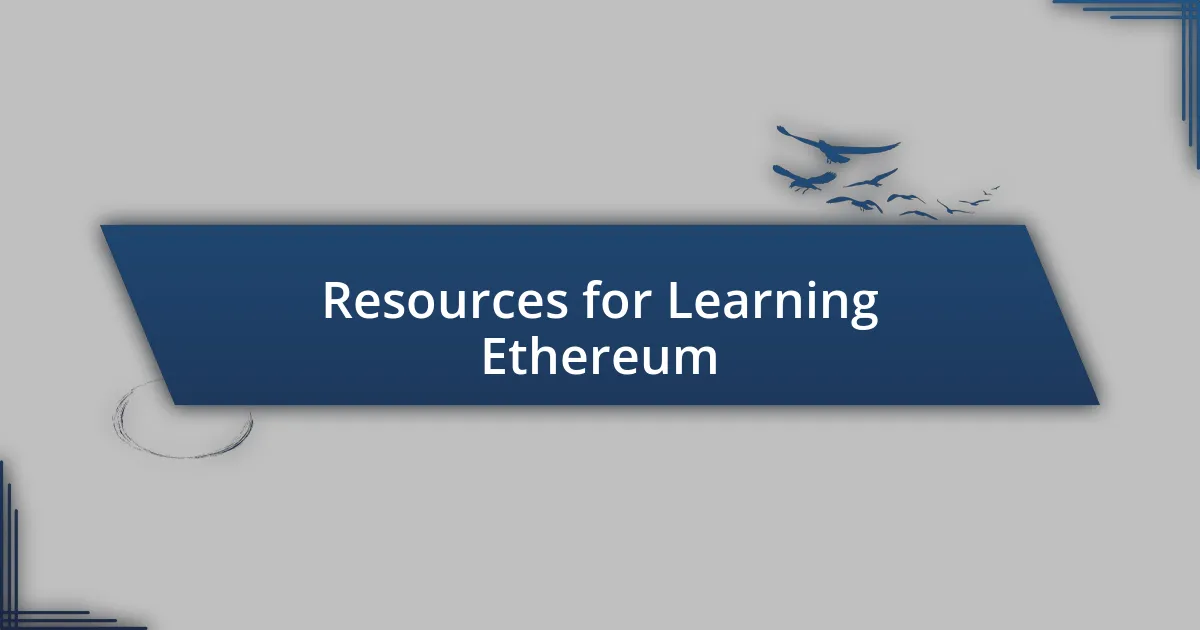
Resources for Learning Ethereum
When it comes to learning Ethereum, I always recommend starting with the Ethereum Foundation’s official website. Their resources are incredibly helpful, providing everything from basic tutorials to advanced technical documentation. I remember my first encounter with their whitepaper; it was like reading a roadmap that unveiled the intricacies of smart contracts and decentralized applications.
Online courses can also be a game-changer. Platforms like Coursera and Udemy offer structured learning paths that break down complex concepts into digestible segments. I enrolled in a course that guided me through creating my first smart contract, and the hands-on experience was invaluable. Have you ever had that moment when everything just clicks? This was one of those times for me.
Don’t forget about community forums such as Reddit or Stack Exchange. Engaging with others can make a significant difference in your learning journey. I often found myself immersed in discussions, feeding off the energy and insights from others who were just as passionate about Ethereum. It’s like joining a vibrant digital community where questions lead to discoveries and every interaction brings new understanding. Isn’t that what learning is all about?

